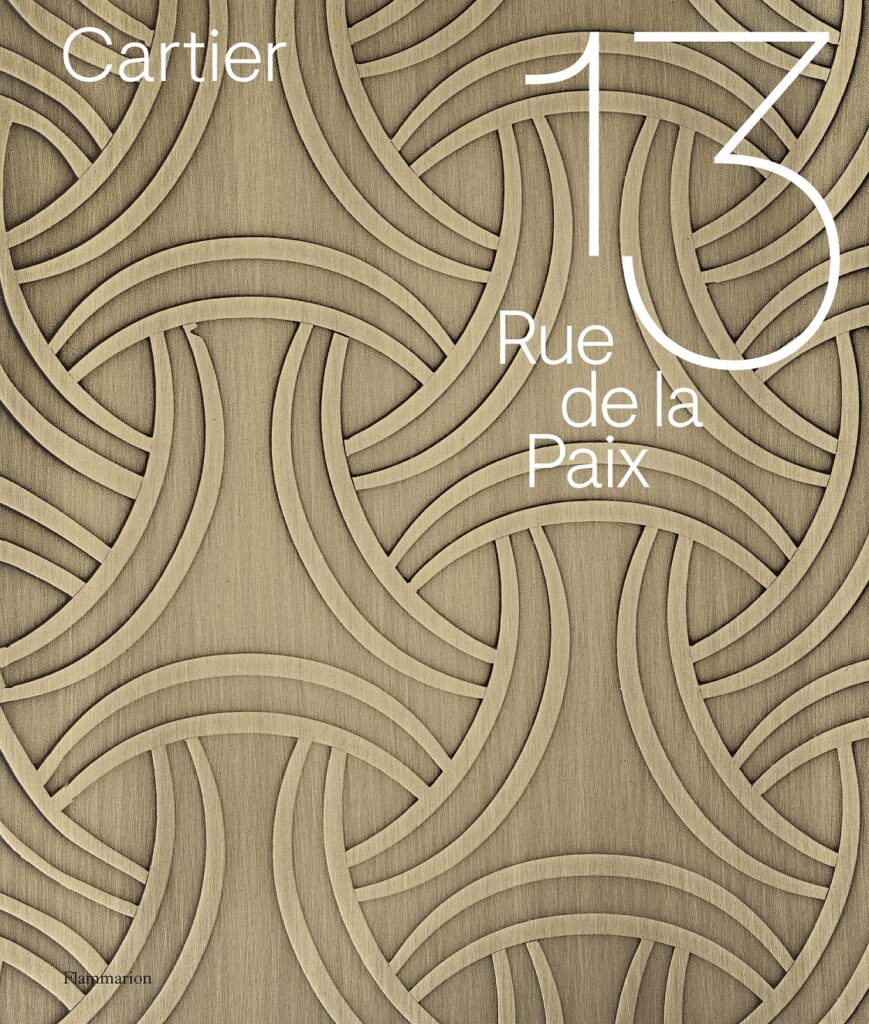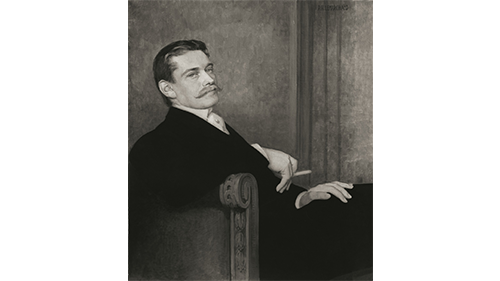The history of a legendary address for a legendary design house is chronicled in “Cartier: 13 Rue de la Paix”. Published by Flammarion, the book was released to coincide with the reopening of the newly remodeled Paris Cartier flagship store located at the address the iconic jeweler made famous. The 268-page coffee-table book, featuring 200 color illustrations, is written by François Chaille, who has penned several other books about Cartier.
Divided into ten chapters, the foreword for the book is written by Cyril Vigneron, president and CEO, Cartier International, who notes that, “…The No. 13 invites us on a journey of new and unexpected discoveries.” The book, named after the famous address, is our map to these discoveries.
Exploring Rue de la Paix

Chapter One, entitled “The Address”, takes us on a pictorial exploration of the space, with illustrations showing the vibrant street life from when Cartier opened at the famed address. Throughout the 1800s, Rue de la Paix was one of the most important streets for luxury in Paris. It was filled with fashionable stores selling clothes, grooming products and of course jewelry. The famed couturier Charles Fredrick Worth, whose family was best friends with the Cartier family, was on the street. The two families grew even closer when Louis Cartier married Andree-Caroline Worth. In November 1899, Cartier opened its shop at 13 Rue de la Paix, a few doors away from Worth. Cartier was already very successful, but the move put the jeweler in the heart of the Parisienne luxury district.
Chapter Two, “New 13 Paix, the Art of Metamorphosis”, introduces us to the three architectural firms that re-conceived the space: Bruno Moinard and Claire Betaille; Studioparisien and Laura Gonzalez. Each firm was charged with designing different areas of the store in collaboration with each other, but using their own style. Sketches of the architect’s designs are included in this section of the book.
The third chapter “A Showcase for the Metiers d’Art” discusses the training involved to become a master at an artisan craft, a very special and particular type of training as recognized by the French Ministry of Culture. It further explores Cartier’s use of special artisans in the redesign of its stores and takes a deep dive into the techniques that were drawn upon for these unique embellishments in the décor.
Through the Cartier Archives

In the fourth chapter, “In the Heart of the Cartier Archives”, Chaille takes us on a tour of the jeweler’s history through its archives, which includes the personal book collection of Louis Cartier. His books have long been a source of inspiration for designers at the maison and Louis’ personal notes are on some of the pages of the books where he found an image or motif that he thought would be right for jewelry. There are also vintage photographs and other items from Jacques Cartier’s travels, which influenced the maison’s designs.
In Chapter five, “Louis Cartier The Foundations of Style”, the design inspirations for the jeweler are examined. The chapter reveals Louis Cartier’s passion for Islamic and Far Eastern art and how it influenced the jewelers stylistic identity along with other muses that have contributed to the design vocabulary of the house.
Some of Cartier’s most renowned designs were created in the 1920s and 1930s, and Chapter Six pays tribute to “Art Deco: A Surge of Modernity”. These pages delve into the use of color and geometric forms in Cartier jewelry as well as Egyptian motifs, for which the house is well known.
Jeanne Toussaint

The book continues to examine the design influences for Cartier in Chapter 7, titled “The Toussaint Taste”, which chronicles the legacy of Jeanne Toussaint, the firms creative director for over thirty years. She was nicknamed “the Panther”, possibly because of her own cat like persona, possibly because of the décor in her home which was filled with panther themes, or perhaps because she is the one who introduced the panther motif at Cartier. Her contributions to Cartier were vast and continue to resonate today.
Not to be forgotten, Chapter Eight, “Those Who Make”, pays homage to the various artisans, sales associates and other people who helped make Cartier into the premiere jewelry house that it is today. Chapter Nine, “Rendez-Vous Chez Cartier”, discusses the notable royal, celebrity and business titans who frequented the store from JP Morgan and the Aga Khan to the Duke and Duchess of Windsor. The tenth and final chapter “Exclusivity” showcases designs made especially for the reopening of the renovated store. Sketches and images of these pieces which take inspiration from the Cartier archives are shown side-by-side with insightful commentary on the history that inspired these newly created pieces. The book closes with a timeline of dates and events from 1806 to 2022 that were significant to Cartier’s evolution at the fabled address.
Featured image (top of page): Portrait of Louis Cartier, 1904, by Emile Friant, photo Cartier Archives Paris © Émile Friant from Cartier: 13 Rue de la Paix (Flammarion, 2022).
Authored by Amber Michelle
